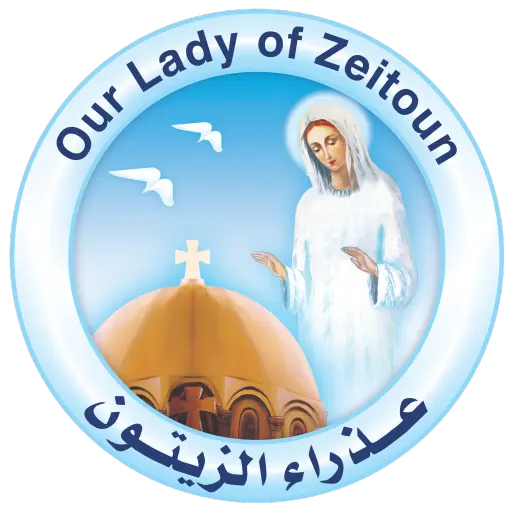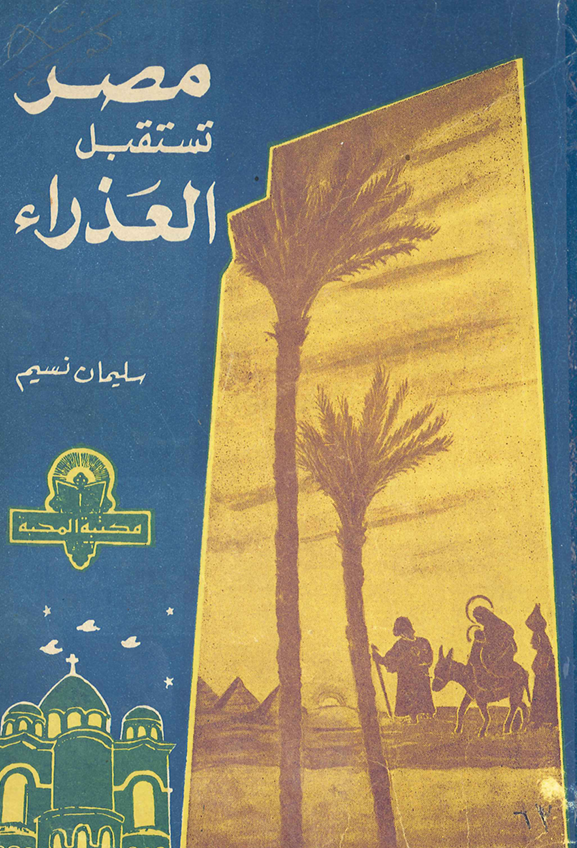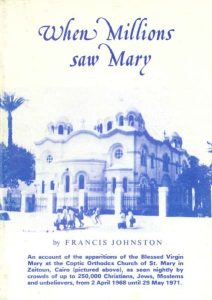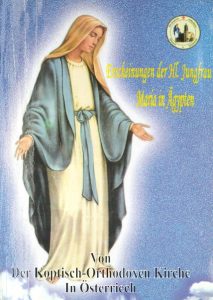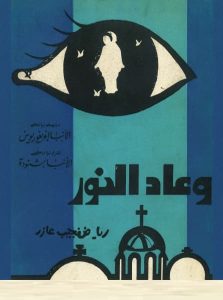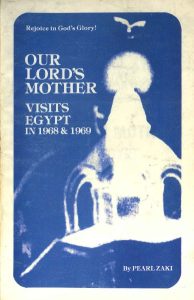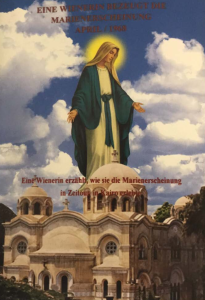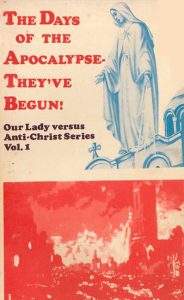Egypt Welcomes the Virgin
Original Book Title: مصر تستقبل العذراء
Author Name: Prof. Suleiman Nassim
Publisher Name: El Mahba – Bookshop
Publication Year: August 1968
Book Language: Arabic
ISBN: N/A
Note:
This is the first published book in Arabic about the apparitions of our lady of Zeitoun, appeared in August 1968 which is 4 months after the first apparition of April 2nd 1968.
The book is reviewed by Bishop Gregorious the head of the investigation committee formed by HH Pope Kyrillos VI and the foreword was by Bishop Shenouda the Bishop of Education
Egypt Welcomes the Virgin
Speaking about our Mother and the pride of our race, the Blessed Virgin Mary, is always sweet and uplifting. We never tire of praising and blessing her, and we continually seek her faithful intercession and prayers for the salvation of our souls.
This time, our book is “Egypt Welcomes the Virgin” by Prof. Suleiman Nassim, one of the pioneers of Christian education and the Sunday School movement in the Coptic Orthodox Church. He served as Professor and Head of the Department of Sociology and Education at the Institute of Coptic Studies, and later as Professor and Head of the Department of Humanities at the Faculty of Technology and Education in Helwan. The book offers a study, documentation, and analysis of the apparition of the Virgin Mary in Zeitoun on April 2, 1968.
The Author’s Style
Prof. Suleiman Nassim weaves together his deep academic background and unwavering faith to produce a thoughtful and comprehensive work that explores the event from multiple dimensions.
Before discussing the apparition itself, he begins with historical and theological foundations, dedicating early chapters to the place of saints in the Church and the Holy Family’s visit to Egypt in the first century. He then moves to the heart of his study, the apparition of the Virgin Mary in her church at Zeitoun in April 1968.
His spiritual depth is evident in both his tone and his frequent citations from the Holy Scriptures.
Prof. Nassim does not treat the apparition as an isolated incident but as a divine message filled with profound spiritual meaning. In his introduction to the book, Bishop Shenouda (later Pope Shenouda III) remarked that Prof. Nassim “brought together the ancient and the modern, from the Virgin’s life since her birth to her manifestation in our time.”
Historical Impact
The book carries special significance as one of the earliest publications written shortly after the Virgin’s apparition, in August 1968.
It also responds to questions and doubts that circulated at the time, such as whether the phenomenon might have been an optical illusion caused by reflected light. Dr. Nassim details the steps taken to confirm the event’s authenticity, including turning off all lights and even smashing electric lamps in the surrounding area, measures that, paradoxically, made the luminous figure even clearer.
A Defense Grounded in Evidence and Faith
Prof. Nassim defended the reality of the Zeitoun apparition through a blend of documentation and analysis, drawing on several key sources:
- Collective Testimonies:
He notes that the apparition was witnessed by thousands of people, Christians, Muslims, and others, Egyptians and foreigners, clergy and scholars alike. Such wide and diverse testimony gave the event undeniable credibility. - Official Statements:
He cites the official statement issued by the Coptic Orthodox Patriarchate on May 4, 1968, confirming the authenticity of the apparition following investigations by church committees. He also references the statement from Egypt’s Ministry of Tourism, which recognized the event and emphasized its religious and historical significance. - Clerical Testimonies:
Prof. Nassim includes statements from prominent church leaders, such as His Beatitude Cardinal Stephanos I, Patriarch of the Coptic Catholics, who affirmed that the apparition was genuine and beyond doubt, based on credible reports from within his community.
The impact of the scientific background of Prof. Suleiman Naseem:
As a professor of the humanities, Prof. Nassim approached the subject not merely as a believer but also as a scholar. He did more than recount the events, he sought to interpret their meaning. For instance, he linked the apparition at Zeitoun to the historic journey of the Holy Family through Egypt, and viewed it in light of Egypt’s social and political climate at the time, as a message of comfort and peace.
He raised thoughtful questions such as:
“Why did the Virgin appear in Egypt? And why specifically in Zeitoun?”
Miracles and Transformation
Prof. Nassim presented the miracles accompanying the apparitions not only as expressions of faith but as documented realities, supported by eyewitness accounts and official confirmations that deepened the event’s spiritual power.
He also spoke of spiritual miracles, transformations of the heart and soul. Many who witnessed the Virgin’s appearance experienced renewed faith in God, inner peace, and joy. The event became a source of reconciliation and spiritual awakening among those who saw it.
The Author’s Personal Experience
The book concludes with Prof. Suleiman Nassim’s own moving testimony:
“If there is to be a conclusion to this account, perhaps it should come from me personally. I myself witnessed this heavenly vision on the evening of May 4, 1968, at around 8:45 p.m. I saw two dazzling white doves flash across the sky like lightning, followed by two moving clouds from which emerged the radiant halo of the Virgin, a vision of incomparable beauty that remains vivid in my memory to this day.
The next day, when I went to pray in her church in Zamalek, that magnificent vision lingered in my thoughts. During the hymns dedicated to the Virgin, I felt a deep spiritual consolation, a joy beyond words, full of peace and grace.”
